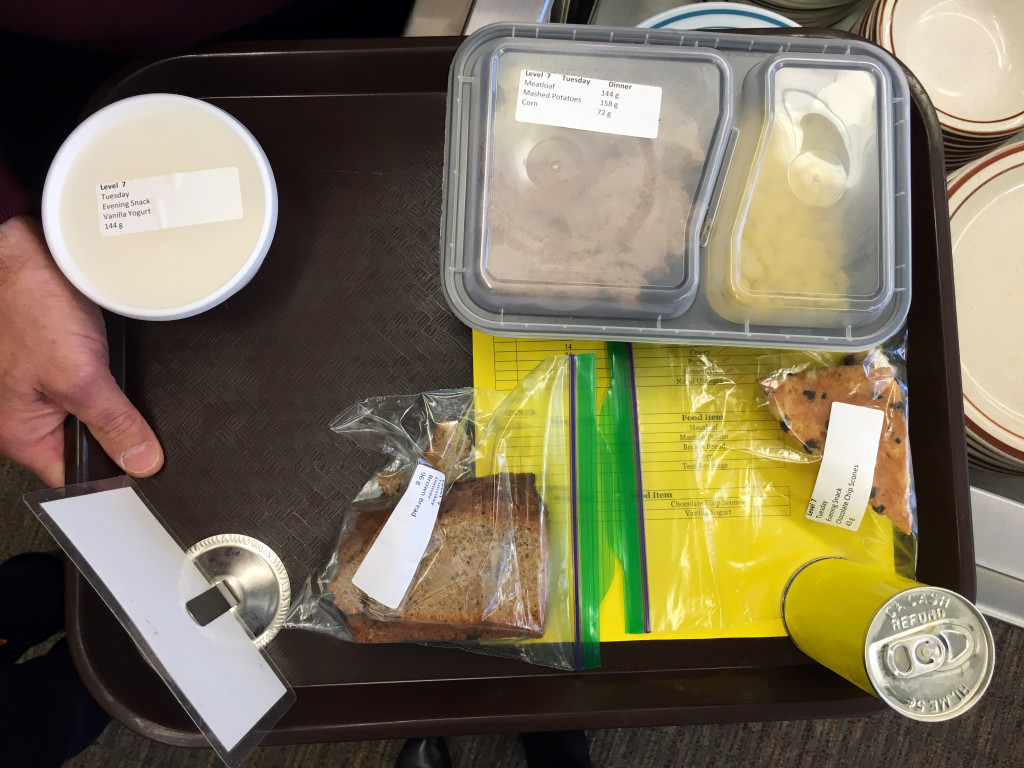Gastropod looks at food through the lens of science and history.
Co-hosts Cynthia Graber and Nicola Twilley serve up a brand new episode every two weeks.
Co-hosts Cynthia Graber and Nicola Twilley serve up a brand new episode every two weeks.
The calorie seems to be an obvious measurement for food. But, in fact, it took hundreds of years and thousands of experiments to nail down what exactly the calorie means, both as a measurement of the food itself (that is, how much energy is contained in the form of a cheeseburger) and a measurement of consumption (how much energy we cheeseburger-eating humans burn as we go about our daily lives). With assistance from nutritionist Marion Nestle, author of Why Calories Count: From science to politics, we trace the calorie's earliest history, from an obsessive-compulsive Italian who invented a special chair with which to measure everything he ate, drank, and excreted over a thirty-year period, to the French chemist who put a guinea pig in a coffee urn to measure how much heat it gave off. Then we travel to the USDA laboratories in Beltsville, Maryland, to check out the way scientists measure calories today: by putting people in tricked-out walk-in coolers and freeze-drying their feces.

IMAGE: (Left) Santorio Sanctorius's weighing chair. (Right) Lavoisier and Laplace's Ice Calorimeter (Diucênio Rangel/Nature Education).
While we're in Beltsville, we also learn about intriguing new USDA studies that have found that, for some foods, the calorie counts on the label are off by double-digit percentages. Following this trail, we end up at Harvard, talking to anthropologist Richard Wrangham about the ways humans have learned to change the number of calories we get from our food by cooking it. And we dive into the differences in how people process calories by visiting microbiologist Peter Turnbaugh at UCSF, who points us to dramatic new research demonstrating the effect the tiny creatures in our gut have on the amount of calories we absorb. The University of Alberta's David Wishart offers us a glimpse of the future, in which truly personalized nutrition advice will evolve from the emerging science of how the chemicals in our bodies interact with all the different chemicals in the food we eat. And Susan Roberts, director of the energy metabolism laboratory at the Tufts USDA nutrition center, suggests an alternative unit as a replacement for the traditional calorie.

IMAGE: David Baer, Bill Rumpler, and Cynthia inside the human calorimeter at the USDA in Beltsville, Maryland.
Listen for all this and more, and then tell us what you think of the calorie. Do you find calorie labels useful, or is counting calories the bane of your life? Let us know!
Marion Nestle and Malden Nesheim's 2012 book is a great guide to the history and science of the calorie. Nestle's most recent book is Soda Politics: Taking on Big Soda (and Winning)
David Baer and Bill Rumpler both work at the Food Components and Health Laboratory at the USDA-ARS headquarters, in Beltsville, Maryland. Check out Baer and his colleagues' papers on the difference between the calories on the label and those our bodies can extract for almonds and walnuts.

IMAGE: Dinner for research subjects at the USDA Food Components and Health Laboratory (Photo: Nicola Twilley).

IMAGE: Human calorimeter research at the USDA Food Components and Health Laboratory (Photo: Nicola Twilley).
Richard Wrangham is the author of Catching Fire: How cooking made us human. His co-authored paper on the difference that cooking makes to the availability of calories in meat was published here.
Peter Turnbaugh's lab at the University of California, San Francisco, promises "better living through gut microbes." In our conversation with him, we discussed this study on the effects that transplanting gut microbes from lean and obese twins had on the weight of mice. Further examples of the impact of microbes on energy balance can be found in this paper on one woman's weight gain following a fecal transplant, and this paper on how risperidone is associated with altered gut microbiota and weight gain.
David Wishart's research group is based at the University of Alberta. You can check out the Human Metabolome Project Database online here. And the Israeli study on personalized nutrition based on individual glycemic responses is available online here.
Susan B. Roberts is the creator of the satiety-based "iDiet." She has also done extensive research into the accuracy of calorie counts on menu labels. David Ludwig's book, Always Hungry?, also proposes measuring foods based on their satiety score. Adam Drenowksi's Nutrient-Rich Food Index is explained here.
We wrote a feature article for Mosaic, the online publication of the Wellcome Trust, to accompany this episode. You can read it online here.
In the episode, we say that a calorie is the amount of heat energy needed to raise the temperature of one gram of water by one degree centigrade, from 14.5º to 15.5º, at one unit of atmospheric pressure. This is accurate, but it is misleading, because throughout the rest of the episode, we are discussing a different kind of calorie—the kilocalorie, which is the amount of heat energy needed to raise the temperature of one kilogram of water by one degree centigrade. The kilocalorie is the number we see on our food labels and recommended daily allowances, but no one other than chemists actually calls it the kilocalorie. Instead, it has been shortened to "calorie" on labels and in everyday usage. Throughout our episode, we follow common practice by calling a kilocalorie a calorie, but then we mistakenly gave the definition of a true calorie without noting the difference. We apologize for any confusion!
For a transcript of the show, please click here. Please note that the transcript is provided as a courtesy and may contain errors.